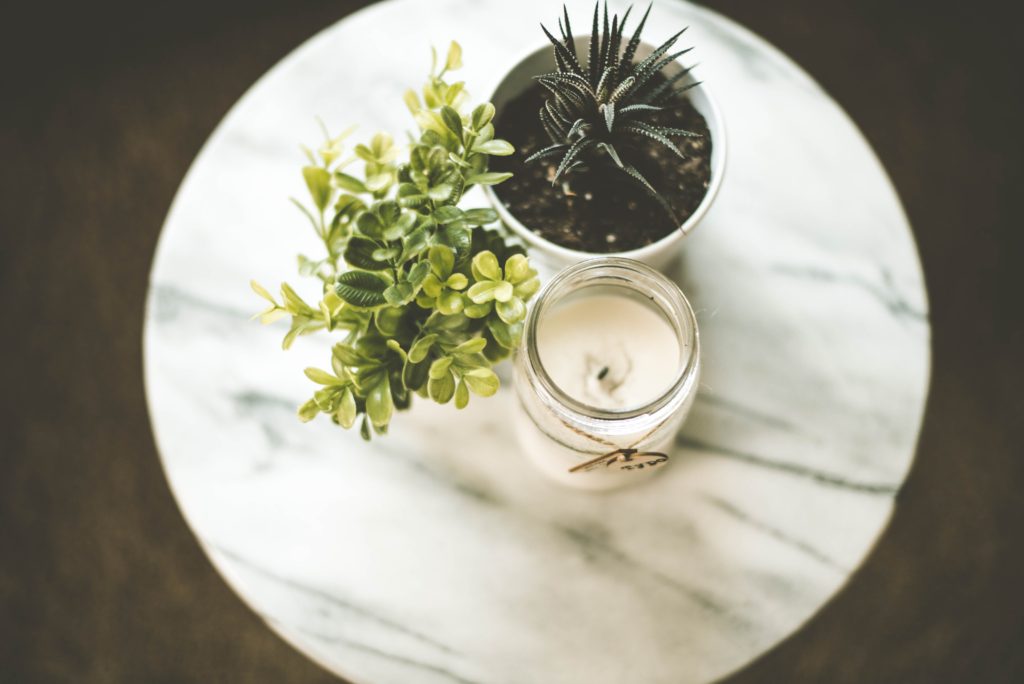by Tudorbeth

Candle magic is one of the oldest forms of magic and probably the easiest to perform – just think about what you already know. For example, when wanting a romantic evening you light pink or red candles, we make a wish on birthday candles, or we light candles for remembrance and ask that our loved ones may be at peace.
Many of the world religions have a festival of lights in some form. From Hanukkah to the lights of diya lamps at Diwali, prayers, wishes, remembrance and tradition all mould together with the magic which surrounds us today as it did in the past. These examples all have candles and light at their centre. Candles represent the fire element, a necessity of life which illuminates the dark night and gives us warmth.
Fire is the element of passion, of love, of action, of movement. It is symbolised by the gods of war and love in an eternal flame that never goes out. Fire is immortal, and flaming imagery is shown throughout the cathedrals and churches the world over. It is the flame of knowledge, and a presence of the divine spark that lives eternally within every human being on this small, beautiful planet of ours.
The best way to connect with this powerful energy is through making your own candles, which is very easy and can be very rewarding. As with everything in the Craft, if you have worked on something by yourself then your energy will be focused into it, whether it is a candle or a meal. Your energy will have passed onto the product.
Here is a brief guide into how to make your own candles.
Wax
Soya or soy wax is the best form of wax: it is eco-friendly, holds scent better and gives a cleaner burn. Basically, stick with soya and you won’t go wrong. I buy it in flake form as it is easier to measure: two handfuls will make a small pillar candle or teacup candle.
Wicks
You can buy pre-waxed wicks with sustainers in varying sizes and lengths on the Internet very cheaply. Some have already been measured and made for teacup sizes, which is perfect.
Moulds
Look around your house at all the different cups, mugs and ornaments you may have that you no longer use. Your mould can be anything: the only thing that it needs to be is heat resistant. You could also go looking around charity shops for odd cups and ornaments that will be unusual as candle holder.
Dye
You can buy dye for soya wax quite readily. Usually it is advertised as being for both paraffin and soy wax, but it is fine for both. Normally it comes in the form of shavings or pellets and should be used sparingly – the colours are very strong and a little goes a long way. Wax crayons can also be used as dye if you have any of them around the house. Candle-making is like all magic in that it is about experience, and the more you experience it, the more knowledgeable and confident you will become.
Saucepan
Please do not go to great expense buying a double boiler: you just need a large saucepan with water, and a Pyrex jug (do not use plastic) or anything else that is pourable.
Thermometer
A thermometer is a must, as wax ignites rather than burning. All wax has a flashpoint. If it ever does ignite, treat it like any oil fire: do not pour water on it! Smother or cover it with a fire blanket or damp tea towel instead. However, if you follow the guidelines and stay aware, you should not have any issues with this.
Essential oils
If you want your candle to have a scent, or if you are making your candle with a magical purpose in mind, use essential oils only, or perfumed oils that have been specially made for candle-making. Remember to use oils only, as oil-based liquids and water-based liquids do not mix.
Method
Pour some water in the saucepan to less than halfway – you want the jug to be sitting in the water rather than floating. If it does float, pour some water out. Turn on the hob to about Mark 3 if electric, or to a low flame if using gas. Put the saucepan on the hob and warm up the water. The water does not need to be bubbling or even simmering: this is a gentle process and you are melting wax, not cooking it.
While the water is warming up, fix your wick and sustainer to the mould with a little dab of glue on the sustainer, and place it in the centre of your mould. You can measure the soya wax flakes out, but I find it easier to add by hand. Start with two handfuls in the jug, then place the jug in the water. Keep your thermometer handy!
Gently stir the flakes and while they are melting, begin to think what you want this candle to do. Is it for love, romance, money or health? Just imagine the energy from the flame lighting the darkness with your energy and power when lit. It is always nice to infuse the candle with your energy and love, even if it is a gift for someone else. The craft is about visualization and weaving, weaving the elements through and within the fabric of the universe.
If you want colour, put a little piece of the dye into the wax. Now use your thermometer: wax usually melts at 137F/59C. The flashpoint of candle wax is 200F/93C, but for soya wax is a little bit lower. Depending on size, quantity and texture, its flashpoint can be anything from 175F/79C, so please be careful!
When the wax and dye have melted and the mixture is smooth and translucent, remove from the heat, allow to cool for five minutes and stir in your fragrance if desired. Now you can carefully pour your candle in the mould. Do not fill right to the top of the mould, but instead leave a couple of centimetres (about 3/4 inch) spare. The wick also needs to be showing at least an inch or two centimetres from the wax. You can trim the wick when you go to light the candle. If you want to sprinkle some herbs on it, or perhaps rose or other flower petals, now is the time to do so, but not in huge amounts. Remember, dried petals are also flammable near a flame.
As we have seen in the previous month and ribbon magic, everything in this world has a correspondence; it goes with something else and herbs and plants are just the same. So, depending on the requirements of your candle, here are some basic correspondences you could use. They can be in any form whether fresh, dried or used as an essential oil.
Rosemary
For protection, passion, love, clarity and healing.
Oregano
For love and relationships, wealth, healing and protection.
Cinnamon
For spiritual awareness, healing and protection, passion, and financial gain.
Basil
For love and relationships, wealth, healing and protection, and for dispelling negativity.
Candle magic is a wonderful way to see how magic has weaved its way into our human psyche and culture. Try your hand at making candles by embracing the fire element. Use the correspondences – for example a
pink candle, rose petals and rose oil for a love spell – and weave magical intent into your candles. Next month we shall be looking at the Wheel of the Year, and view the element of the earth itself.
Until next time,
Blessed Be
Tudorbeth

About the author:
Tudorbeth has been a practising witch for over 30 years. She has written many books on the subject. Her latest title is A Spellbook for the Seasons, published by Eddison Books.
www.thebritishcollegeofwitchcraftandwizardry.org/
More from this author
Nature's Craft: The First Magic - Ribbon and Colour Spells
Nature's Craft: Protection
Nature's Craft: Tools of the Craft





